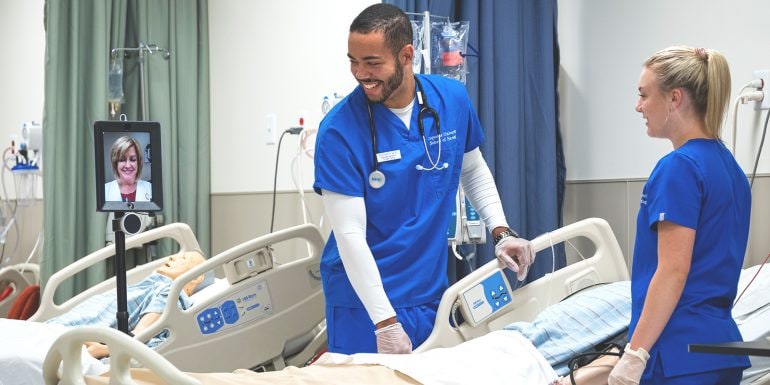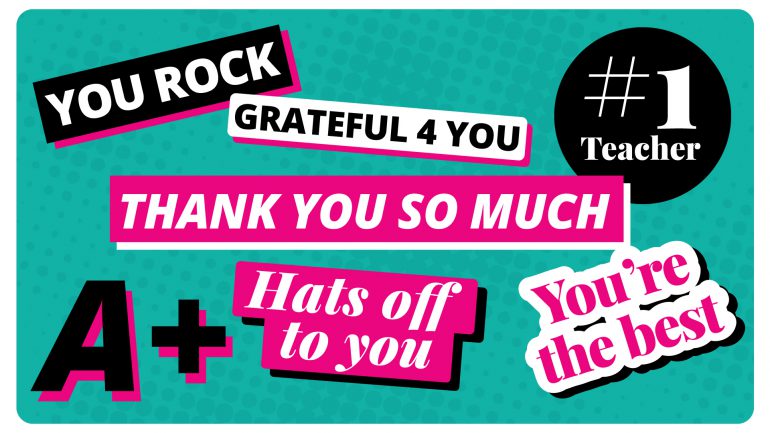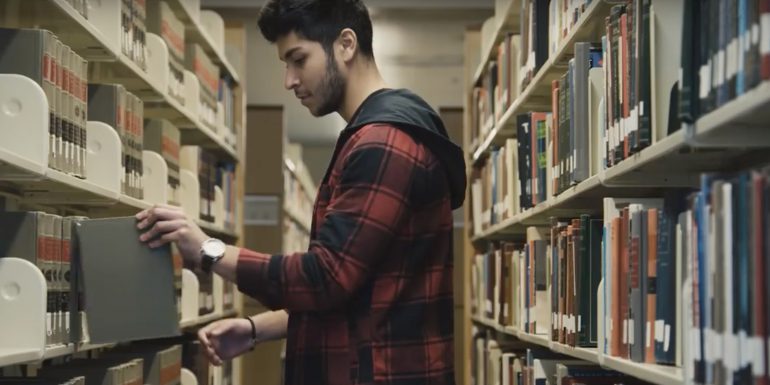Ungrading: What's the hype?
by Amy Byron

As instructors we’ve got a lot on our plate. We need to lecture, prepare digital materials and organize our online courses, provide individual feedback and check-ins, submit forms to our institution throughout the semester, and answer constant emails. On the flipside, our students also have full their plates with family obligations, work and employment to balance, and of course the global pandemic. Getting students to class and having work completed is half the battle, and the other half is justifying grades. Because of the increased educator workload and the mounting pressures on students, what can we do?
What is ungrading?
Many instructors are now exploring the “ungrading” model as a potential solution. Because we still need grades at the end of each semester, there’s still a need to view and evaluate student work. It’s how we evaluate the work that will be different in this model.
In the different models of ungrading, instructors don’t grade every piece of work and award points. They decide whether the piece of work meets their standard or not. If not, the work is sent back to the student for revisions.
This requires some rethinking of the traditional grading workflow. For example, in a chemistry class a student completes a problem set. If it’s missing work, I would give that feedback and return it to the student for revision. Are all of the answers incorrect? Same thing. I refuse to accept the problem set until the work is done to satisfactory standards.
How can you implement ungrading in your classroom? There are a few different models to choose from as a starting point.
Spec grading/portfolios
One type of ungrading is called Spec (for specifications) Grading. Instructors create curricular “bundles” which, when completed, get translated into a grade. These bundles include media, notes, homework assignments and simulations, and ultimately some sort of summative assessment. Each piece of work in the bundle is graded pass/fail only and must minimally meet the teacher’s standards.
Students need a clear understanding of what constitutes passing work prior to engaging in this model. Having exemplars or rubrics which clearly outline the required components of successful work is critical at the beginning of the semester. These don’t need to be super specific. For example, in math this could include
- Show all work done to arrive at your answer
- Simplify all answers
- If asked to “explain your answer,” use full sentences
- Include units, where needed
At the beginning of the semester you will be spending a lot of time giving feedback to student work that isn’t meeting requirements. Flexibility around work that is deemed “failing” is important, as is the ability for students to revise their work and resubmit. Once your students have a clearer understanding of the expectations, the time devoted to giving feedback will lessen.
Contract grading
In contract grading, the instructor has clearly defined and outlined requirements for each letter grade (A, B, C, etc.). More or deeper work will be required for an A, standard work for a B, and less for each subsequent letter grade down. Students each write a contract which includes which assignments they will do, their due dates, penalties for late work, and a statement of the letter grade they want at the end of the term.
The instructor will keep a log of completed work that is, again, done to the level of work defined by the instructor. If the student fails to meet the requirements of the contract, the instructor has the ability to adjust their grade based on the submitted work.
The unique part of contract grading versus traditional grading is that the focus is on the work, not the “kind of student” in your class. All work is considered to be of equal weight, and meetings with students generally focus on improvement to work quality or opportunities for a deeper dive into the curriculum.
Consultative grading
Allowing the student to determine their grade can be a serious leap of faith, but that’s what consultative grading is. This does not mean that all students receive an “A”. Student have regular check-in meetings with the instructor throughout the semester. At the end of the semester, the student writes a comprehensive reflection and puts together a compilation of their best work.
The student must have data that demonstrates that they deserve the grade they propose. An example of an end-of-the-semester reflection can be found here, as written by Dr. Susan Blum from the University of Notre Dame (Supiano, Becky).
Thought needs to be given to how handle extenuating circumstances on the part of the student. I tend to not make concrete rules on this, as I find that each student’s circumstances are unique.
Conclusion
While I have been thinking about making the switch to ungrading for the last few years, I haven’t made the leap just yet. Besides choosing which model to go with, I still need to identify the following:
- What are you willing to negotiate on with students?
- How will you handle absences?
- How will you be transparent with students throughout the semester, so they know they are on or off target?
I’m looking forward to encouraging my students to improve their work, making grading more transparent, and creating a classroom that is focused on the learning process and not on numerical grades.
Resources
Butler, Ruth. “Task-Involving and Ego-Involving Properties of Evaluation: Effects of Different Feedback Conditions on Motivational Perceptions, Interest, and Performance.” American Psychological Association, American Psychological Association, 1987, psycnet.apa.org/record/1988-21628-001.
Cordell, Ryan. “How I Contract Grade.” Ryan Cordell, 7 Dec. 2019, ryancordell.org/teaching/contract-grading/.
Flaherty, Colleen. Professors’ Reflections on Their Experiences with ‘Ungrading’ Spark Renewed Interest in the Student-Centered Assessment Practice, Inside Higher Ed, 2 Apr. 2019, www.insidehighered.com/news/2019/04/02/professors-reflections-their-experiences-ungrading-spark-renewed-interest-student.
Hall, Macie. “What Is Specifications Grading and Why Should You Consider Using It?” The Innovative Instructor Blog, 11 Apr. 2018, ii.library.jhu.edu/2018/04/11/what-is-specifications-grading-and-why-should-you-consider-using-it/.
Rosenblatt, Adam. “Committing to Ungrading, in an Emergency and After.” The Chronicle, Duke University, 27 Mar. 2020, www.dukechronicle.com/article/2020/03/duke-university-gradin-coronavirus-covid-19-public-health-crisis-emergency-thinking-ungrading-pass-fail.
Sorensen-Unruh, Clarissa. “Ungrading: What Is It and Why Should We Use It?” Chemical Education Xchange, Chemical Education Xchange, 14 Jan. 2020, www.chemedx.org/blog/ungrading-what-it-and-why-should-we-use-it.
Stommel, Jesse. “How to Ungrade.” Jesse Stommel, 11 Mar. 2018, www.jessestommel.com/how-to-ungrade/.
Supiano, Beckie. “Grades Can Hinder Learning. What Should Professors Use Instead?” Chronicle of Higher Ed, Chronicle of Higher Ed, 23 July 2020, www.chronicle.com/article/grades-can-hinder-learning-what-should-professors-use-instead/?bc_nonce=f3tifpo2zoqg492u3b2dg&cid=reg_wall_signup.
read more




















































